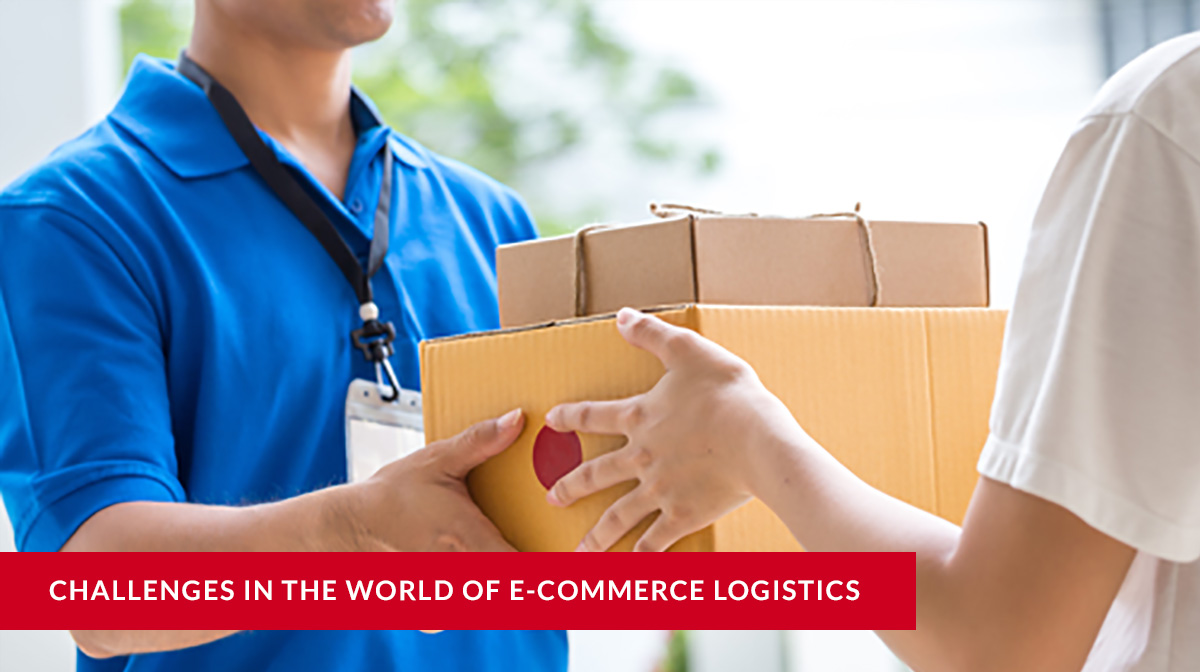
Challenges in the world of ecommerce logistics
India is a country with so many characteristics. It has a diverse social, economic, and demographic mapping, which is unique in the world. Despite that, the country has outperformed in every area. With the changing phase of business operations, the country is establishing new records in unconventional fields like e-commerce as well.
With the development of e-commerce, there is a need for advanced logistics facilities as well. Since it is the order fulfillment arm, it can be a big differentiator and enabler for e-commerce companies. They can create unique experiences in adding and retaining loyal customers.
What does an e-commerce business expect from the logistics facility? Well, the expectations have been changing with the evolution of the business and its preferences. To build an ecosystem, which is robust and responsive, the logistics companies have to deal with some challenges. Some of these challenges are internal and some are external.
Infrastructural challenges
The first and biggest challenge is physical and technical infrastructure. When we think about the e-commerce business, we think about efficiency as the biggest benefit.
It has to keep customer promises on the expected delivery date. It is a ‘make or break’ point. Infrastructure creates the necessary base on which the entire system is erected. Without a robust infrastructure, it will be impossible for a logistic service provider to keep the customers happy. Today, some companies are stretched beyond their capacity. Some are facing ‘policy paralysis’ issues. There is a lack of policy framework that can address the requirements of logistics space pan-India. Especially, in the big cities.
Thankfully, the government is taking sincere steps to build infrastructure and making logistic parks, building roads, and highways. These efforts will bring a change in the situation. Not only roads but waterways are being developed across the rivers and sea in India.
Still, the aviation infrastructure is underutilized. If more cargo spaces are created for the movement of material, it will speed up the delivery.
Another big challenge is the lack of automation. To manage scale, the warehouse industry has to automate the majority of the activities. Though efforts have been done in that direction, still there is a long way to go. Automatic packing, sorting, large conveyors, and material handling equipment are required.
Connectivity
In the logistics business, time is crucial. Real-time tracking of material, GPS monitoring, and automatic alert system are some features that make it state-of-the-art and give a great experience to the customers. Still, in many areas, people struggle for connectivity. The 4G connection is not available sometimes. As there are preparations of 5G are on the menu card, basic connectivity has to be made robust first. To sync across platforms, an e-commerce business needs a good system. With improved connectivity, it will be possible.
Availability of good, talented people
The warehousing business needs great teamwork. Each one in the team has to be qualified and trained. Also, there should be good coordination among the team. So far, the industry is facing a talent crunch. It is a low-talent industry. Since the pay structure is low, and the sector is unorganized, people do not have the motivation to choose it as a career. Therefore, the scope is there for institutionalized skill development. Thus, it will become an alternative career choice. As the sector will adapt to technological advancement, qualified technical people will join the bandwagon. Slowly, it will attract the best talents. However, it is not as simple as it looks. It will take great efforts to achieve the goal because it has to change the perception of the people.
Government policies and regulations
Yes, the existing policies are becoming inhibiting factors for the growth of the logistics sector. Take the example of cross-state transportation and fragmented tax structure. There has been an improvement with the introduction of GST, though. Now the industry feels some relief and the sector can expect some growth. Many expectations are there with the government to make policies for the development of integrated logistics plans. It is important that the expectations reach to the appropriate authority.
Volume management
In e-commerce business or retail, the distribution of load is not even. There is a big surge during certain periods in the year, whereas, the business remains stagnant during the rest of the time. Hence, it is quite difficult to do capacity planning. If it is done considering the peak time, then the infrastructure gets underutilized. If not done, then it faces a huge load at peak time. It becomes impossible to fulfill the orders within committed timelines. It is not good for the business. Logistics companies need to follow an innovative approach to handle volumes. It is possible when they remain engaged with the industry. Planning should begin at least four months prior to the season. It includes all aspects-hiring of people, space planning, resource mapping, and network building. To do it better, data analytics and forecasting system should be in place. High-end data servers and robust IT systems will be required to do the analysis and forecasting correctly.
Summary
The challenges are many, but it is not impossible to overcome them if the sector moves with planning. Speed and reliability are critical for e-commerce logistics if they want to deliver consistent customer experience. They need to develop agile solutions and follow innovations. Customers are getting more demanding with every passing day. Also, there is a burgeoning growth expected in the sector. Hence, e-commerce logistics should work hard to fulfill every order reliably. Logistics companies need to become responsible partners in the development of e-commerce business. It will benefit both of them.

